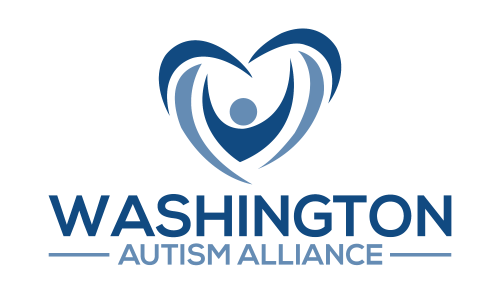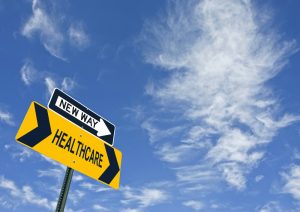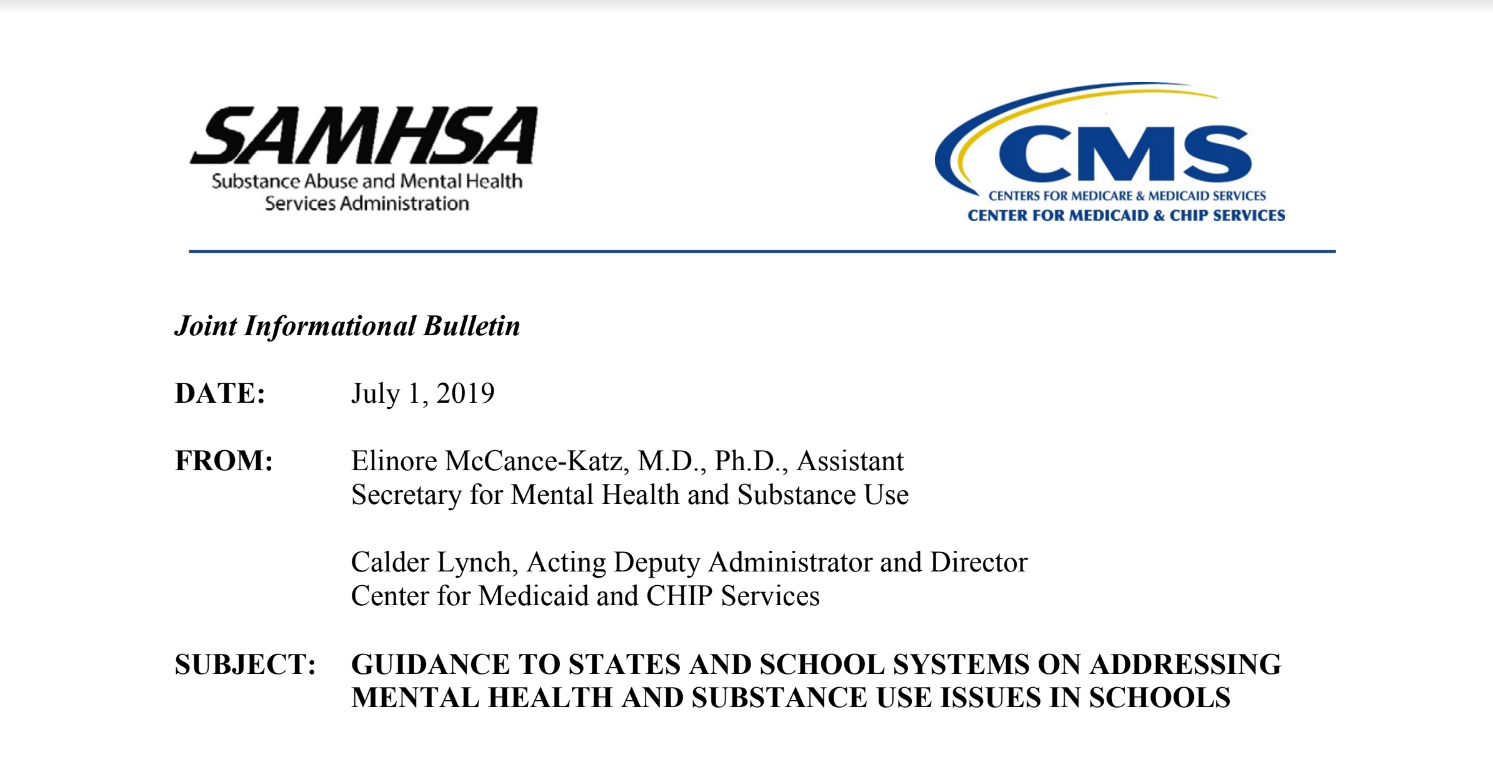The bulletin explains that there are several best practice models of MH/SUD treatment in schools including: multi-tiered system of supports, comprehensive school mental health systems, building mental health literacy, school resource officers, crisis intervention teams, and behavioral health aids and peer supporters. These services can be funded through Medicaid or non-Medicaid funding.
If school-based MH/SUD services are funded by Medicaid, they are subject to the same requirements as Medicaid services provided in other settings. For example, a Medicaid-funded school provider must meet the same licensing or certification criteria required for any other Medicaid provider. While there is no distinct Medicaid benefit for school-based services, states may submit a state plan amendment to provide such services. Medicaid has mandatory benefits and optional benefits. Either category can cover MH/SUD services in schools. Mandatory benefits that may cover MH/SUD services in school include: physicians’ services benefits, federally qualified health center benefits, and rural health clinic benefits. Optional benefits that may cover MH/SUD services in school include: rehabilitative services benefit, other licensed practitioner services benefit, clinic benefit, prescription drug benefit, and case management benefits. Depending on the state, Medicaid may also be able to cover MH/SUD services in school through home health benefits, managed care, freedom of choice waiver, or demonstration projects.
States may bill and pay for Medicaid-covered services provided in schools through a fee-for-service/claim-based payment (i.e., a provider would submit a request for payment for services) or recognized cost reimbursement (i.e., costs are aggregated and reported on a quarterly or annual basis). The latter is more common. Lastly, if certain criteria are satisfied, Medicaid reimbursement may be available for free services. For example, Medicaid may cover services in a child’s IEP.
There are also alternative ways to provide Medicaid-funded MH/SUD services in school such as collaborating with community providers, among others. These collaborations are called school-based health centers (“SBHCs”). SBHCs provide health care services by qualified health professionals, are located in or near a school, and are organized through school, community, and health provider relationships. Another available alternative is telehealth/telemedicine. Telehealth/telemedicine is two-way, real time communication through digital information or telecommunication technology. It is helpful in ensuring Medicaid services are provided to beneficiaries in rural areas or areas where qualified providers are scarce.



